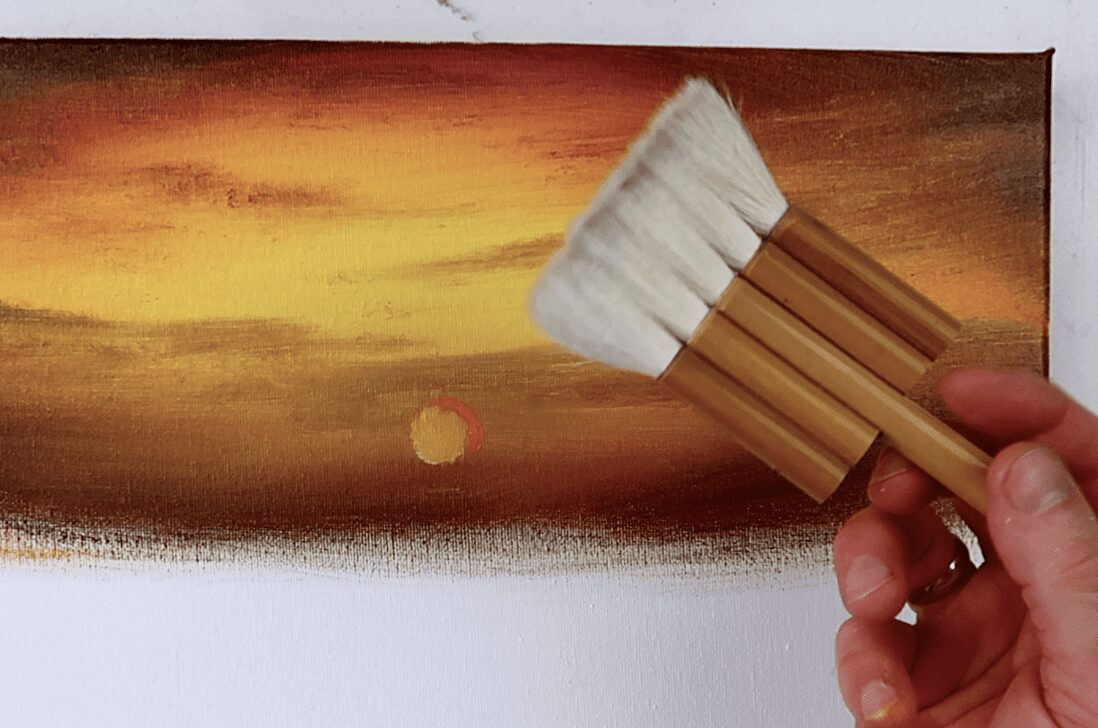
Mastering Vibrant Skies: Essential Techniques for Painting Dynamic Landscapes
Elevate your landscape paintings with captivating and vibrant skies.
Whether you’re a beginner artist or looking to enhance your skills, we have essential techniques to help you capture the beauty and drama of the sky. Visit UrArtStudio at urartstudio.com for free painting tips, step-by-step instructions, art video tutorials, unconventional paint brushes, and more to unlock the beauty of skies in your artwork.
1. Study Atmospheric Conditions
Take time to observe different types of skies and their atmospheric conditions. Notice how clouds form, their shapes, and the colors they reflect. Explore various weather patterns like clear skies, fluffy cumulus clouds, dramatic storm clouds, or mesmerizing sunsets. Understanding these elements will enable you to accurately represent the mood and atmosphere of your landscape paintings.
2. Blend Colors Seamlessly
To achieve realistic and vibrant skies, practice blending colors smoothly. Gradually transition from one hue to another, capturing the subtle shifts of color that occur during different times of the day or under specific lighting conditions. Experiment with brush techniques like glazing, dry brushing, or wet-on-wet to achieve beautiful and seamless color gradients.
3. Utilize Layering Techniques
Create depth and dimension in your sky by using layering techniques. Start with a base color, then layer additional colors to depict the atmosphere. Gradually build up layers of clouds, haze, or atmospheric elements to bring realism and a sense of depth to your sky. This technique will add visual interest and make your landscape paintings come alive.
4. Explore Brushwork and Texture
Experiment with different brush strokes and textures to capture the unique qualities of the sky. Use softer, feathery strokes for wispy clouds, or dabbing techniques for textured cloud formations. Vary the pressure, angle, and bristle type to create different effects and mimic the ethereal nature of the sky.
5. Play with Light and Shadows
Pay attention to the interplay of light and shadows in the sky. Study how the changing position of the sun affects the colors and values of the sky. Experiment with contrasting warm and cool tones to depict the subtle nuances of light and shadow. This will add depth and a sense of dynamic movement to your sky.
6. Use Photography as Reference
Consider using photographs as references for your sky compositions. Capture beautiful skyscapes during different times of the day and use them as inspiration for your artwork. Study the lighting, color palette, and cloud formations present in the photographs to recreate them authentically in your paintings.
7. Express Your Unique Interpretation
While learning techniques is essential, don’t be afraid to bring your unique artistic interpretation to the sky. Let your imagination take flight and infuse your paintings with your personal style and vision. Embrace experimentation, take risks, and let your creativity be the guiding force in creating breathtaking skies.
Remember, the sky is a vast canvas waiting to be explored with your brushes. For more comprehensive guidance, step-by-step instructions, and a wide range of unconventional paint brushes to enhance your sky paintings, don’t forget to visit UrArtStudio at urartstudio.com. Unleash your creativity and watch your skies come alive with vibrancy and beauty.
#LandscapePainting, #VibrantSkies, #ArtTutorials, #PaintingTechniques, #ArtInspiration, #ArtistsCommunity, #SkyPaintings, #UrArtStudio.


Leave a Reply
You must be logged in to post a comment.